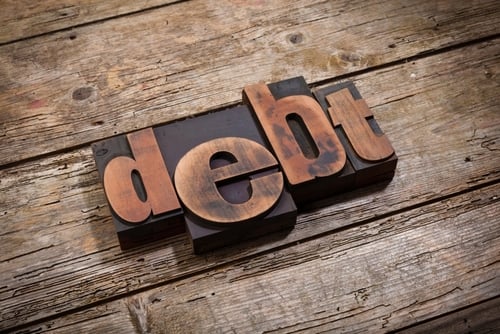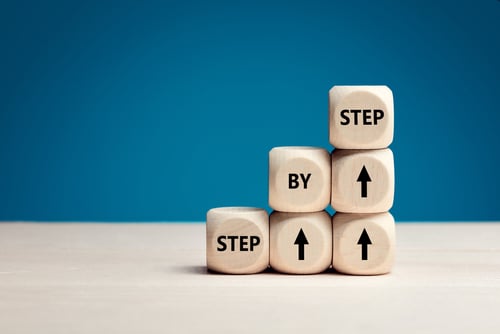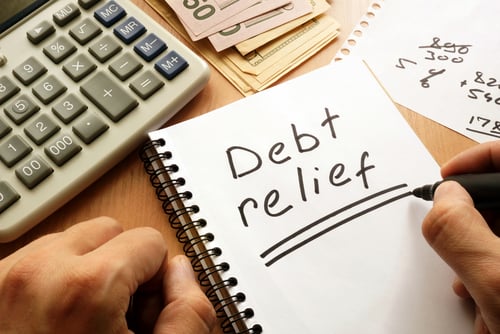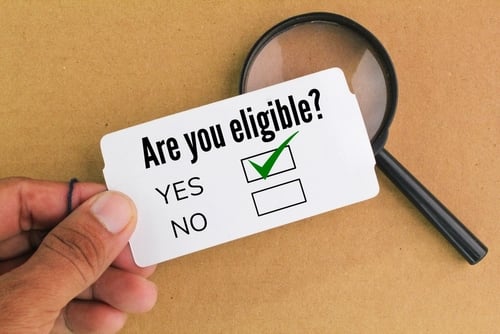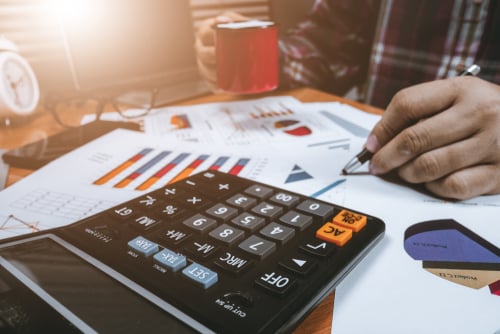What is the Difference Between Good Debt and Bad Debt?

These alarmingly low percentages speak to the overwhelming majority of Americans within those demographics who currently are in debt – and those percentages are staggeringly high – all hovering near 80%. (Baby boomers: 80.9%; Generation Xers: 79.9%; and millennial’s: 81.5%.) On its face, debt is simply borrowing money for the present, at the expense of the future.
Debt certainly has a negative connotation for many, and the above statistics speak to a situation that requires further exploration and invites many questions. Why are so many Americans taking on debt? Is all debt “bad?” Is some debt “good?” Are there, in fact, differences between good and bad debt? Let’s take a closer look.
Good Debt
As a general rule, if a type of debt can help you enhance your earnings potential or net worth, then it can be considered “good” debt. For example, good debt can take the form of student loans (though this has become a subject of recent debate), home mortgages, home equity loans, debt consolidation loans and small business loans.
Borrowing for educational needs is still considered a form of good debt because a college or technical degree generally leads to a greater ease of employment and higher earnings potential. The return on investment over the course of a career makes it easier to pay back student loans, particularly with a degree in the STEM (science, technology, engineering and mathematics) fields.
ABC
Mortgages and Other Real Estate Loans
A residential home mortgage is considered a form of good debt because of the straightforward strategy of buying a home and living in it for many years before selling it at a profit. Prior to the bursting of the real estate bubble burst in 2007, median housing prices in the U.S. showed an annual increase of 6.4% from 1968 to 2004.
Following a multi-year period of decline and stagnation, since 2012, U.S. median home prices have been increasing at a similar rate, making home mortgages a form of good debt once again. Meantime, renting out a residential property backed by a mortgage can also generate income, while debt taken out for commercial real estate investments can generate cash flow and capital gains as well.
Finally, low-interest rate home equity loans or lines of credit at reasonably low interest rates can be utilized as a form of debt consolidation to pay off higher interest-rate credit card debt.
Small Business Loans and Debt Consolidation Loans
Small business loans that foster entrepreneurial endeavors are considered a form of good debt in that they can lead to the freedom of not requiring an employer to supply a job and steady paycheck. With a small business loan, the right combination of ambition, brains, hard work and luck can lead to exceptional wealth creation and freedom.
Meantime, debt consolidation loans can be a form of good debt that results in interest expense savings for an individual carrying multiple forms of unsecured high-interest rate debt.
A debt consolidation loan that is issued at a lower overall blended interest rate not only results in considerable interest expense savings over the long-term, but also streamlines the debt repayment process by replacing multiple creditors and monthly payments with one single creditor and payment each month.
The potential drawback, however, is that an irresponsible debtor may simply spend the interest expense savings that result from a debt consolidation loan.
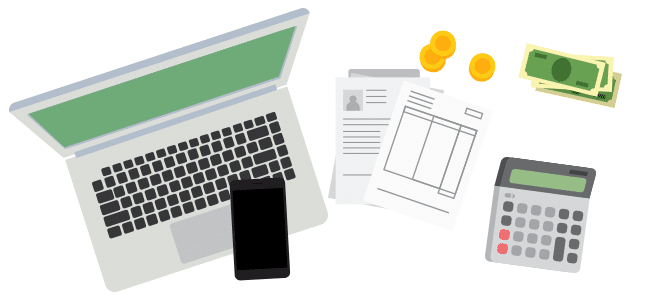

Bad Debt
Bad debt can be characterized as debt that cannot lead to an increase in earnings potential or net worth, as well as any debt taken for the purchase of depreciating assets.
The general rule is that if an item can’t appreciate in value, its purchase should not be funded by debt. At the top of that list resides borrowing for the purchase of a new car. Auto loans are a form of bad debt because the value of a new car immediately depreciates as soon as it is driven off of the lot and becomes a “used” car.
Examples of other expensive, quickly depreciating assets include high-end luxury label clothing and large flat-screen televisions. None of these items should ever be paid for by debt. If you don’t have the cash sitting in the bank to buy these items, consider making adjustments. Buying a good quality, pre-owned vehicle in cash is never a bad idea, for example.
Good thrift stores that offer name-brand label clothing for a relative pittance are a viable alternative, as are apps such as OfferUp and Poshmark.
Credit Card Debt
Credit card debt is perhaps the worst form of debt of all, as the high interest rates often associated with credit cards can result in a protracted period of repayment during which interest expense accumulates.
Almost all purchases funded by credit card debt involve consumables that will never appreciate in value, and with few exceptions – such as for the purchase of an online business creation course or similar vocational training – will not lead to an increase in earnings potential.
This is not to say that credit cards are entirely “bad” – when used responsibly they are a highly useful tool for building a credit score and can be a useful budgeting tool. It’s when they are used improperly to fund a lifestyle beyond one’s means that credit cards quickly become a form of bad debt.

Are you in debt? we can help
Get Debt Relief
Speak with licensed debt specialists dedicated to guiding you toward financial stability every step of the way.

Ready To Get Started?
See if you qualify for debt relief. Get a Free savings estimate to see how quickly you can be debt free.
Embrace financial freedom with our tailored solutions, expert guidance, and unwavering commitment to your success.
Experienced Professionals
Our experienced team has helped thousands of clients successfully eliminate debt and regain financial freedom.
Customized Solutions
We know every financial situation is different, so we design personalized debt relief plans to fit your specific needs and goals.
High Success Rate
Our proven debt relief strategies deliver real results. With a strong track record of success, we help clients achieve lasting financial stability.
Confidential Consultation
Your privacy is our priority. All debt relief consultations are 100% confidential and handled with the highest level of discretion.
Explore other blogs
